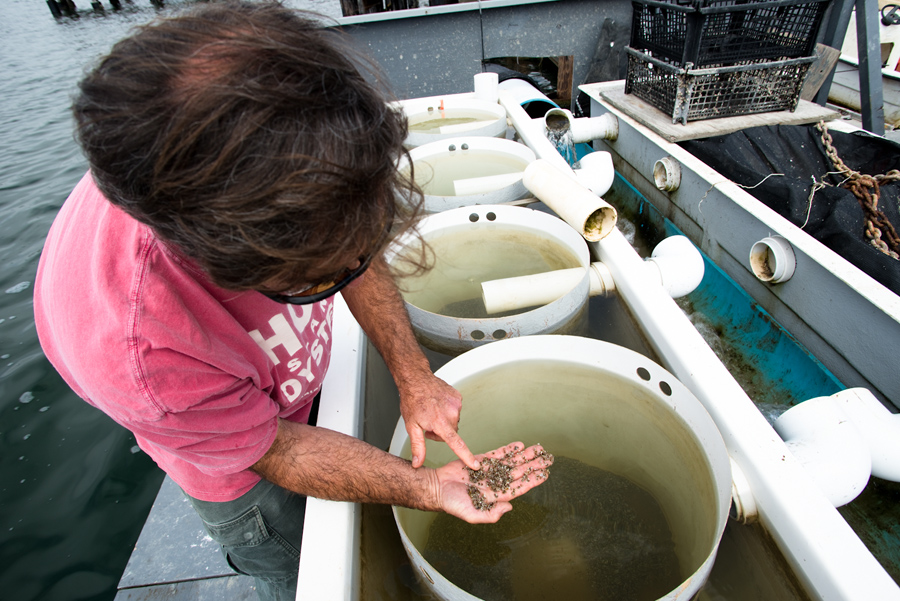A handful of what looks like damp, grayish cereal sits in a plastic tub on Hog Island Oyster Company owner Terry Sawyer’s desk. It . . .
Impacts of ocean acidity feed oyster grower’s research


A handful of what looks like damp, grayish cereal sits in a plastic tub on Hog Island Oyster Company owner Terry Sawyer’s desk. It . . .